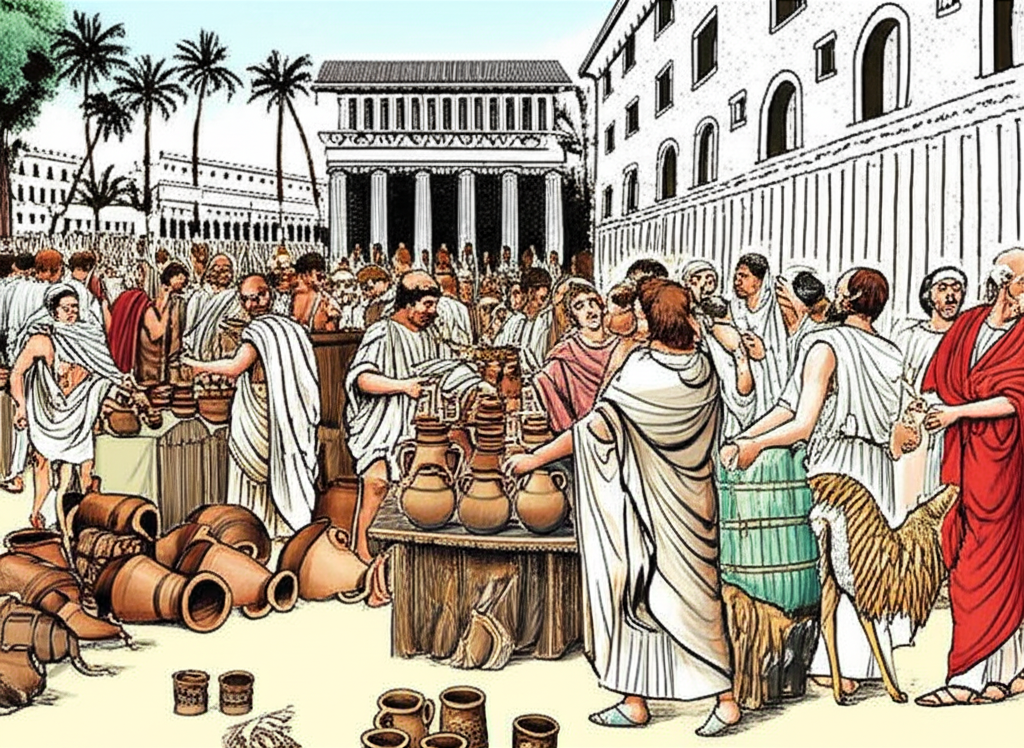History textbooks often present a neat, chronological account of events, filled with significant dates and major figures. But the truth is, the past is far messier, funnier, and frankly, much weirder than most of us imagine. Beyond the kings, battles, and declarations, daily life and obscure moments reveal bizarre practices, strange decisions, and shocking facts that challenge our modern sensibilities. For a deeper dive into world history, exploring resources like the Encyclopedia Britannica can offer foundational knowledge, but it’s the hidden corners we’re about to explore that truly highlight the surprising history and untold stories of the past.
This blog post isn’t about the big wars or famous treaties. It’s about the little-known historical facts that will make you question everything you thought you knew. From ancient hygiene habits to peculiar conflicts and strange medical advice, get ready for a mind-bending journey through time that offers a completely new lens on the human experience. We’ll cover weird history from ancient times to more recent quirks, showcasing just how strange our ancestors could be. Let’s dive into some truly surprising history.
The Ancient World Was Not What You Think
Urine as Laundry Detergent (Ancient Rome)
Forget harsh chemicals; ancient Romans had a surprisingly effective, albeit pungent, cleaning agent: fermented urine. This wasn’t just for clothes; fullers, who cleaned fabric, used large vats of it to whiten and degrease tunics. The ammonia produced during fermentation acted as a powerful cleaning agent.
Romans even used stale urine diluted with water as a mouthwash, believing it whitened teeth due to the ammonia content. While this seems utterly repulsive by today’s standards, it highlights the resourcefulness of ancient societies. They utilized readily available resources effectively, demonstrating a practicality that goes beyond their famous engineering feats like aqueducts and roads. This historical hygiene fact certainly challenges our modern squeamishness.
The Library of Alexandria’s Mysterious Demise
The popular image of the Library of Alexandria’s destruction involves a single, catastrophic burning event. However, the reality is far more complex and less dramatic than a sudden inferno. Its decline was a long, drawn-out process spanning centuries.
Multiple incidents contributed to its loss. Julius Caesar’s conflict in Alexandria in 48 BC damaged part of the collection. Later, religious conflicts, like Christian riots in the 4th century AD, targeted pagan institutions, including potentially parts of the library or associated buildings. Decreased funding, political instability, and subsequent conquests (including by Arab forces in the 7th century AD, although the extent of their role is debated) all played a part. The library didn’t vanish overnight; it slowly faded due to neglect, damage, and changing intellectual climates. This gradual loss underscores the fragility of knowledge preservation throughout history.
Strange Pets of Roman Emperors
Roman emperors, wielding absolute power, often indulged in eccentricities, including their choice of animal companions and how they treated them. Perhaps the most famous example is Emperor Caligula’s horse, Incitatus.
Caligula was reportedly so fond of Incitatus that he planned to appoint him to the high office of consul. He built the horse an elaborate stable, gave him an ivory manger, and even planned a marble stall. While the appointment never officially happened before Caligula’s assassination, the idea itself speaks volumes. It illustrates the unchecked power and potential madness of Roman rulers, where political norms could be disregarded for personal whim. These bizarre actions offer a glimpse into the peculiar world of some ancient rulers.

Medieval and Early Modern Madness
The Great Emu War (Australia, 1932)
Yes, a war was fought against emus in Australia in 1932. Following crop destruction by a large population of emus, the Australian military was deployed to cull the birds. Armed with machine guns, soldiers faced a surprising challenge.
Here’s how the “conflict” unfolded:
- Initial Tactics: Soldiers attempted ambushes and open-fire engagements.
- Emu Resilience: Emus proved incredibly difficult targets, running fast, scattering unpredictably, and being surprisingly resistant to bullets.
- Military Struggle: The emus outmaneuvered the soldiers, making efficient culling nearly impossible.
- Outcome: After multiple attempts and consuming large amounts of ammunition with limited success, the military campaign was withdrawn. The emus, for the most part, won.
This bizarre historical event highlights the unpredictable challenges faced during the settlement of new territories and serves as a comical reminder that humanity doesn’t always triumph over nature. It’s truly one of history’s weirdest conflicts.
Ketchup as Medicine (1830s)
Before it was a beloved condiment, ketchup had a brief, strange stint as a medicinal cure-all in the 1830s. Following observations that tomatoes might have health benefits, particularly for digestive issues, Dr. John Cook Bennett of Ohio championed the fruit.
Bennett developed and marketed “tomato pills” claiming they could cure ailments like diarrhea, indigestion, and even rheumatism and jaundice. Other entrepreneurs quickly followed suit, creating various dubious tomato-based concoctions. The lack of regulation in the patent medicine industry allowed these claims to proliferate. Eventually, these medicinal claims were debunked, and ketchup slowly transitioned back to being primarily a sauce, its reputation salvaged decades later as a food item rather than a drug. This period reflects the often-absurd nature of historical medicine and marketing.
The Dancing Plague of 1518
In the summer of 1518, a strange phenomenon struck Strasbourg (then part of the Holy Roman Empire). Known as the Dancing Plague, it began with a woman named Frau Troffea, who started dancing uncontrollably in the street. Soon, dozens, then hundreds, of people joined her, dancing for days without rest, sometimes to their deaths from exhaustion or heart attack.
Authorities were baffled. Theories about the cause range from mass hysteria, possibly triggered by stress and famine, to ergot poisoning – a fungus that grows on rye and can cause hallucinations and spasms. Regardless of the exact cause, the event is a chilling example of how psychological or environmental factors could manifest in bizarre, devastating ways in populations with little understanding of mental or physical health conditions. It remains one of history’s most mysterious historical epidemic events.

Unexpected Connections and Modern Quirks
The Shortest War in History (Anglo-Zanzibar War, 1896)
Prepare for a blink-and-you-miss-it conflict. The Anglo-Zanzibar War, fought between the United Kingdom and the Sultanate of Zanzibar on August 27, 1896, holds the record for the shortest war ever recorded. Its duration? A mere 38 to 45 minutes.
The conflict erupted when the pro-British Sultan Hamad bin Thuwaini died, and his nephew, Khalid bin Barghash, seized power without British approval. The British issued an ultimatum for Khalid to step down, which he ignored. When the ultimatum expired, the Royal Navy bombarded the Sultan’s palace. Khalid fled, and the British quickly installed a more compliant Sultan, ending the conflict almost before it began.
Here’s a quick comparison:
| Conflict Name | Duration |
|---|---|
| Anglo-Zanzibar War | ~40 minutes |
| World War I | ~4 years |
| Thirty Years’ War | 30 years |
| The Hundred Years’ War | 116 years |
This conflict starkly illustrates how quickly political tensions could escalate and be resolved through overwhelming imperial force in the colonial era, a stark contrast to many modern protracted conflicts.
Carrots Were Originally Purple
When you picture a carrot, you likely see vibrant orange. However, the orange carrot is actually a relatively recent development in its long history. Carrots were originally cultivated in a range of colors, including purple, white, yellow, and even black.
The orange carrot we know today was popularized in the Netherlands in the 17th century. It’s widely believed (though debated) that Dutch growers selectively bred carrots to be orange as a tribute to the House of Orange, the Dutch royal family. This conscious cultivation for symbolic reasons led to the dominance of the orange variety we see in supermarkets today. It’s a simple fact about a common vegetable, yet its history is tied to culture, agriculture, and national pride.
Before Alarm Clocks: The ‘Knocker-Upper’
In the days before affordable and reliable alarm clocks, especially during the industrial revolution in Britain and Ireland, getting up for work often required outside assistance. This led to the unique profession of the “knocker-upper.”
These individuals were paid to wake people up. They used various methods, most commonly a long stick to tap on upstairs windows or throwing pebbles. Some used rattles or shouted. Knocker-uppers would not leave a client’s window until they were sure the person was awake. This job highlights the adjustments made to daily life routines before common modern technologies and shows the human element involved in keeping the gears of early industrial society turning. It’s certainly one of history’s weirder jobs.
Conclusion: History’s Enduring Power to Surprise
From Roman hygiene practices that would make us gag to military campaigns against birds and vegetables bred for political symbolism, the historical facts we’ve explored are far from the dry narratives sometimes found in textbooks. They are bizarre, counter-intuitive, and often hilarious glimpses into the realities of past lives and events.
These surprising moments remind us that history is a vibrant, messy, and incredibly human story, full of quirks and unexpected turns. Recognizing these weird corners challenges our assumptions and encourages us to look beyond the familiar. By exploring these less-told stories, we gain a richer, more nuanced understanding of human experience across different eras. So, keep exploring, because history has an endless capacity to surprise.
FAQ
Q: Are these facts fully verified?
A: While some details might have nuances debated by historians (like the exact extent of damage to the Library of Alexandria in specific events), the core historical facts presented – such as Romans using urine for cleaning, the Emu War, or the concept of knocker-uppers – are widely accepted historical events or practices.
Q: How did people manage hygiene with urine mouthwash?
A: While it sounds unhygienic to us, the ammonia in fermented urine does have antiseptic and whitening properties. Modern hygiene standards are vastly different; ancient Romans didn’t have toothpaste as we know it, relying on various abrasive powders or substances like urine as alternatives.
Q: Did the Emu War have any lasting impact?
A: Primarily, it became a humorous anecdote in Australian history, often taught in schools. It highlighted the difficulties of controlling large wild animal populations and led to different, non-military methods being considered for pest control in agriculture.
Q: Were purple carrots completely replaced by orange ones?
A: No, purple, yellow, and white carrots still exist today and are sometimes found in specialty markets or seed catalogs. However, the orange variety became dominant globally due to cultivation, breeding for sweetness and texture, and likely historical factors like the Dutch popularity.
Q: How long did the ‘knocker-upper’ profession last?
A: The profession lasted well into the 20th century, declining as alarm clocks became more affordable and widely available, especially after World War II. It was common in industrial towns until personal alarms became standard household items.

